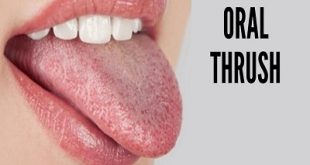What is Ocular Migraine?
Ocular migraine is a painless, temporary visual disturbance that can affect one or both eyes. Though they can be frightening, ocular migraines typically are harmless and self-resolve without medication within 20 to 30 minutes. If an ocular migraine-like vision disturbance is followed by a throbbing, usually one-sided headache, this is called a “migraine with aura” (previously called a classic migraine), and the visual disturbance is referred to as an aura rather than an ocular migraine.
A migraine headache without a visual disturbance preceding it is called a “migraine without aura” (previously called common migraine). Migraine auras usually are visual in nature, but they can include disturbances of hearing, speech, or smell; progressive numbness or tingling in the face or arms, or legs; or generalized weakness.
It’s also possible, though less common, for an ocular migraine and a migraine headache to occur simultaneously, causing visual disturbances and unilateral (one-sided) or bilateral (two-sided) head pain at the same time, or for an ocular migraine to follow a migraine headache. Painless ocular migraines can appear suddenly, creating the sensation of looking through a cracked window. The accompanying visual distortion spreads across the field of vision and usually disappears within 30 minutes.
Pathophysiology
The pathophysiology of migraine remains controversial. One theory of ocular migraine is that it is due to vasospasm within the retinal or ciliary vasculature while others think it is a spreading depression of the neuron in the retina that is similar to the spreading depression of the cerebral cortex. The spreading depression of the cerebral cortex is usually seen in the visual aura of a classic migraine; it has been observed in patients having an episode of retinal migraine, vasoconstriction of both veins, and arteries that could be diffuse or segmental. It also can be noticed by ocular hypoperfusion on fundoscopy. Fluorescein angiography can confirm the diagnosis. The fluorescein angiogram shows delayed filling or occlusion of the central retinal artery and its branches with either normal ciliary circulation or patchy choroidal defects and capillary dropout.
Retinal migraine attacks are precipitated by similar factors as a migraine with aurae such as stress, smoking, hypertension, hormonal contraceptive pills, exercise, bending over, high altitude, dehydration, hypoglycemia, or excessive heat. Strong family history in these patients suggests that a retinal migraine has a genetic predisposition but no clear pattern of inheritance has been described. The vasospasm theory is controversial due to the complexity of the retinal vascular supply. Retina has dual circulation, central retinal artery supplies, and inner retinal layers, lacks adrenergic innervation, maintains sensory nerves, and is auto-regulated. The choroidal circulation supplies the posterior retina including the photoreceptors it carries adrenergic fibers without autoregulation.
Different types of ocular migraines
While ocular migraines on their own are usually temporary and not serious, they do come in three different types:
Painless Ocular Migraine
Sometimes ocular migraines happen without headaches. They aren’t the same for everyone and can vary from person to person. Some people may see psychedelic images, others see flashing or shimmering lights, and others see stars or zigzagging lines. The effect begins small but soon spreads and obscures the field of vision in both eyes, then clears on its own.
The visual effects may be the only symptoms, but sometimes motor function or speech is also temporarily affected. While these types of ocular migraines are not considered serious, they do briefly interfere with ordinary activities, such as driving, reading, or writing. If one comes on while you’re on the road, pull off to the side until it passes. They typically last between thirty minutes and an hour.
Migraine with Aura
A fifth of people who suffer migraine headaches also experiences ocular migraines, sometimes as a warning symptom that the headache is on its way. If you’ve experienced visual distortions before headaches, make sure to discuss it with your doctor. It is sometimes possible to reduce the frequency of migraines by avoiding triggers like eating certain foods, exposure to sudden bright light, and stress. Other triggers can include smoking and certain medications.
Retinal Migraine
The third and potentially more dangerous form of ocular migraine is retinal migraine. While ocular migraines affect both eyes, retinal migraines will only affect one, though they may also precede a migraine headache just like in the case of migraine with aura.
This is the rarest type of ocular migraine. It happens when the blood vessels in the retina constrict, reducing the blood flow to the eye. Long-term damage to the eye is rare, and a retinal migraine may only happen once every few months, but it’s safer to consult with the eye doctor to make sure it isn’t connected to another condition.
Stages of migraine attacks
Most migraine attacks emerge through a timeline of at least three stages:
- prodrome
- headache
- postdrome
Ocular migraine, however, tends to have four stages due to the experience of visual auras:
- Prodrome. Known as the pre-headache phase, this can last for hours or days and can present in a number of ways, including changes in mood, fatigue, light, and sound sensitivity, insomnia, stomach upset, and muscle tension.
- Aura. Experienced by approximately 25%-30% of people with migraine, auras are sensory experiences that can cause functional impairment, sometimes lasting for up to an hour.
- Headache. This is the presence of pain on one or both sides of the head that can last for hours or days. Head pain can be moderate to severe and can be accompanied by nausea, light and sound sensitivity, and sleep disturbance.
- Postdrome. The end of the headache phase, postdrome occurs in approximately 80% of people with migraine. It’s characterized by the absence of head pain, but the persistence of physical symptoms like body aches, fatigue, dizziness, or sensitivity to light and sound.
During an ocular migraine, visual symptoms most commonly appear before the onset of your head pain. But it’s possible to experience these visual changes during and after the headache, as well.
You can have a migraine without experiencing all of the stages. In fact, you can have an ocular migraine without any head pain.
Causes of Ocular Migraine
It’s not clear why people develop retinal migraines. Current evidence suggests that there’s a temporary block in the blood supply to the retina, and this causes both vision changes and headaches.
Vision goes back to normal once the blood vessels relax and blood can get through them again.
Certain things can trigger retinal migraines. But since so few people experience retinal migraines and triggers can vary from person to person, there’s no complete list of retinal migraine triggers. There’s evidence that triggers for classic migraines can also trigger retinal migraines, but the overlap isn’t 100%.
Evidence shows triggers for a retinal migraine include:
- Stress
- Smoking
- High blood pressure
- Hormonal contraception
- High altitude
- Dehydration
- Low blood sugar
Symptoms of Ocular Migraine
Ocular migraines can cause a variety of visual symptoms. People have reported seeing:
- Flashes of light
- Distorted images
- Blind spots
- Zigzag lines across the field of vision
These symptoms come on suddenly and may last just a few minutes or up to half an hour.
Ocular migraines are sometimes accompanied by symptoms of a traditional migraine headache including:
- Headache pain
- Nausea
- Double vision
- Pain around the eyes
Though scary, ocular headaches do not cause any permanent damage to vision.
Risk factors
- A family history of ocular migraines or other types of migraines increases the risk of developing ocular migraines.
- Age and gender can also be risk factors. As women get older, they may have fewer migraine headaches or headaches with less pain, but they may experience more ocular migraines.
Ocular Migraine complications
Complications of a retinal migraine include:
Central retinal artery occlusion (CRAO), retinal infarction, central retinal venous occlusion, branch retinal artery occlusion (BRAO), retinal hemorrhages that can lead to edema of the retina and disc, ischemia of choroid or optic nerve, and vitreous hemorrhage.
Many of those could lead to irreversible vision loss in the patient.
It is important to avoid the use of triptans, ergots, and beta-blockers in migraines with transient vision loss secondary to the risk of potentiating vasoconstriction and increasing the risk of irreversible visual loss.
Diagnosis
Your doctor will ask you about your symptoms and examine your eyes. They’ll try to rule out other conditions that could cause similar problems, such as:
- Amaurosis fugax, temporary blindness due to a lack of blood flow to the eye. It can happen because of a blockage in an artery that leads to the eye.
- Spasms in the artery that brings blood to the retina
- Giant cell arteritis, is a problem that causes inflammation in blood vessels. It can lead to vision problems and blindness.
- Other blood vessel problems related to autoimmune diseases
- Substance use disorder or overusing illicit drugs
- Conditions that keep your blood from clotting normally, like sickle cell disease and polycythemia
- Stroke or transient ischemic attack (TIA)
Treatment of Ocular Migraine
All migraines, including ocular migraines, can be debilitating.
If you’re diagnosed with ocular migraine, your doctor may recommend one of the following medications:
- Epilepsy drugs, such as valproic acid (Depakote or Depakene) or topiramate (Qudexy XR, Topamax, or Trokendi XR)
- Blood pressure drugs, such as beta-blockers, including metoprolol (Lopressor) or propranolol (Inderal), and calcium-channel blockers including nicardipine (Cardene) and verapamil (Calan)
- Tricyclic antidepressants, such as venlafaxine (Effexor), nortriptyline (Pamelor), and amitriptyline (Elavil)
- Calcitonin gene-related peptide (CGRP) inhibitors, such as eptinezumab (Vyepti), galcanezumab (Emgality), fremanezumab (Ajovy), and erenumab (Aimovig)
Because ocular migraine may also occur with pain, your doctor might recommend you take pain relievers, such as:
- Acetaminophen (Tylenol)
- Non-steroidal anti-inflammatory drugs (NSAIDs) such as ibuprofen (Advil), aspirin, or naproxen (Aleve)
How can I prevent an ocular migraine?
Making sure you’re well hydrated, eating a balanced diet, and in overall good health when it comes to your blood pressure and blood sugar levels, should go a long way to helping reduce the occurrence of ocular migraines.
In terms of treating any pain that comes with the ocular migraine, you can take pain relief such as paracetamol or ibuprofen, as well as reduce your exposure to the triggers we discussed earlier in this blog post.
You may also be able to have anti-epileptic medication prescribed to you, which can help prevent migraines. However, there is still plenty of research to be done when it comes to treating ocular migraines.
To help with the pain, you might find it useful to:
- Lie down in a dark room
- Massage your scalp or temples
- Sit in a quiet environment
- Drink water
 Diseases Treatments Dictionary This is complete solution to read all diseases treatments Which covers Prevention, Causes, Symptoms, Medical Terms, Drugs, Prescription, Natural Remedies with cures and Treatments. Most of the common diseases were listed in names, split with categories.
Diseases Treatments Dictionary This is complete solution to read all diseases treatments Which covers Prevention, Causes, Symptoms, Medical Terms, Drugs, Prescription, Natural Remedies with cures and Treatments. Most of the common diseases were listed in names, split with categories.







